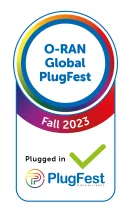Optimizing cell coverage and user distribution with the Spectrum Efficiency rApp
Written by David Nelo, Technical Sales and Solutions Engineer
Published by vmware.com on 7th February 2024
The increasing demand for high-speed data and seamless connectivity, as well as the proliferation of connected devices, have put immense pressure on mobile networks to deliver efficient and reliable services. Several factors need to be considered and challenges addressed to achieve high levels of service performance and efficiency. Radio spectrum, for example, is a finite and valuable resource allocated by regulatory bodies to ensure that different wireless technologies coexist without interference. Consequently, the efficient utilization of the spectrum is essential to deliver high-quality services, reduce latency and accommodate the ever-growing demand for data transmission.
As the demand for wireless services continues to soar, the spectrum available becomes scarcer. In a crowded spectrum environment, interference between different wireless devices or networks can degrade the quality of communication. Overlapping frequencies and signal interferences can result in dropped calls, slow data speeds and overall network congestion.
Even though 5G NR brings innovation in spectrum efficiency through technologies like Massive MIMO, beamforming and dynamic spectrum sharing, radio resource mismanagement is still present due to network complexity, high density and accelerated deployment, directly impacting spectrum efficiency. One example of the operational problems causing this scenario is the increasing number of ‘overshooter’ and ‘undershooter’ cells:
- An overshooter is a cell whose radio range goes beyond the intended coverage area and interferes with neighbouring cells
- An undershooter is a cell that fails to produce the range for which it has been designed to cover a minimum number of user
The increasing number of such cells can cause a variety of issues for subscribers, including dropped calls and lower-than-expected data throughput.
Future Connections Spectrum Efficiency rApp powered by VMware Centralized RIC
To manage complex networks while ensuring correct cells´ range configuration and, at the same time, providing high performance levels, is a task beyond the capabilities of human beings. Such complexity can be tackled successfully only by using automation and advanced techniques such as Artificial Intelligence (AI) and Machine Learning (ML). AI/ML play a crucial role in reducing cost when optimizing and maintaining the mobile network. What’s more, they support the scalability, reliability and security of mobile networks by providing intelligent insights and predicting situations of potential service degradation.
Leveraging its in-depth experience in network performance assurance, optimization and automation, Future Connections has developed the Spectrum Efficiency rApp to automate the optimization of cell coverage and user distribution in a network. The rApp uses data provided by the VMware Centralized RIC to detect offending sites. It then automatically adjusts antenna tilt parameters at such sites to optimize cell coverage and user distribution, providing the remediation of the conflicts created by these offending overshooter and undershooter cells.
The solution
The Future Connections rApp is hosted in the VMware Centralized RIC which, in turn, is hosted on the VMware Telco Cloud Platform RAN. Performance and configuration data from the RAN domain are obtained via the O1 interface from O-RAN compliant network elements. For non-compliant equipment, a legacy OSS adapter is used for data ingestion. The VMware Centralized RIC platform provides a range of R1 services that are utilized by the Future Connections rApp to implement its logic.
All cells in the network are analyzed to identify overshooters and undershooters. This is executed in the Spectrum Efficiency rApp thanks to the data obtained from the VMware Centralized RIC. The rApp implements the relevant PM and CM data analytics to estimate the user and traffic distribution for the service area of each cell. Geospatial techniques are then used to define the different cell range categories based on the topology of the network.
The combination of user distribution and cell range categories enables the rApp’s algorithm to identify offenders. Once offenders are identified, antenna tilt adjustments are applied to remedy the situation according to specified conditions.
Coverage and capacity cells are treated differently. The Future Connections Spectrum Efficiency rApp offers the flexibility to define different strategies according to the operator´s requirements. Aggressive or conservative tilt adjustments can be equally applied depending on the frequency band and offending cell situation. Scenarios for selected cells can be controlled separately using a blacklist.
The benefits
The Spectrum Efficiency rApp developed by Future Connections and powered by the VMware Centralized RIC offers a highly effective solution to the growing challenge caused by the increasing density and complexity of RAN networks. Automated optimization using intelligent applications is the only viable solution to address the issues caused by such complexity that are impacting the subscribers. Automation is possible thanks to the features of the VMware Centralized RIC that allow for programmatic management and control the radio access network (RAN). The RAN Intelligent Controller from VMware enables Future Connections application to tap into network data, process it and use it to modify RAN behavior.
Overshooting and undershooting cells are a real concern to CSPs as they directly impact the quality of service experienced by users. The Future Connections rApp enables CSPs to minimize the impact of the offending cells as they roll-out and optimize their 5G networks and ensures that the 5G services reach the highest possible levels of performance.



